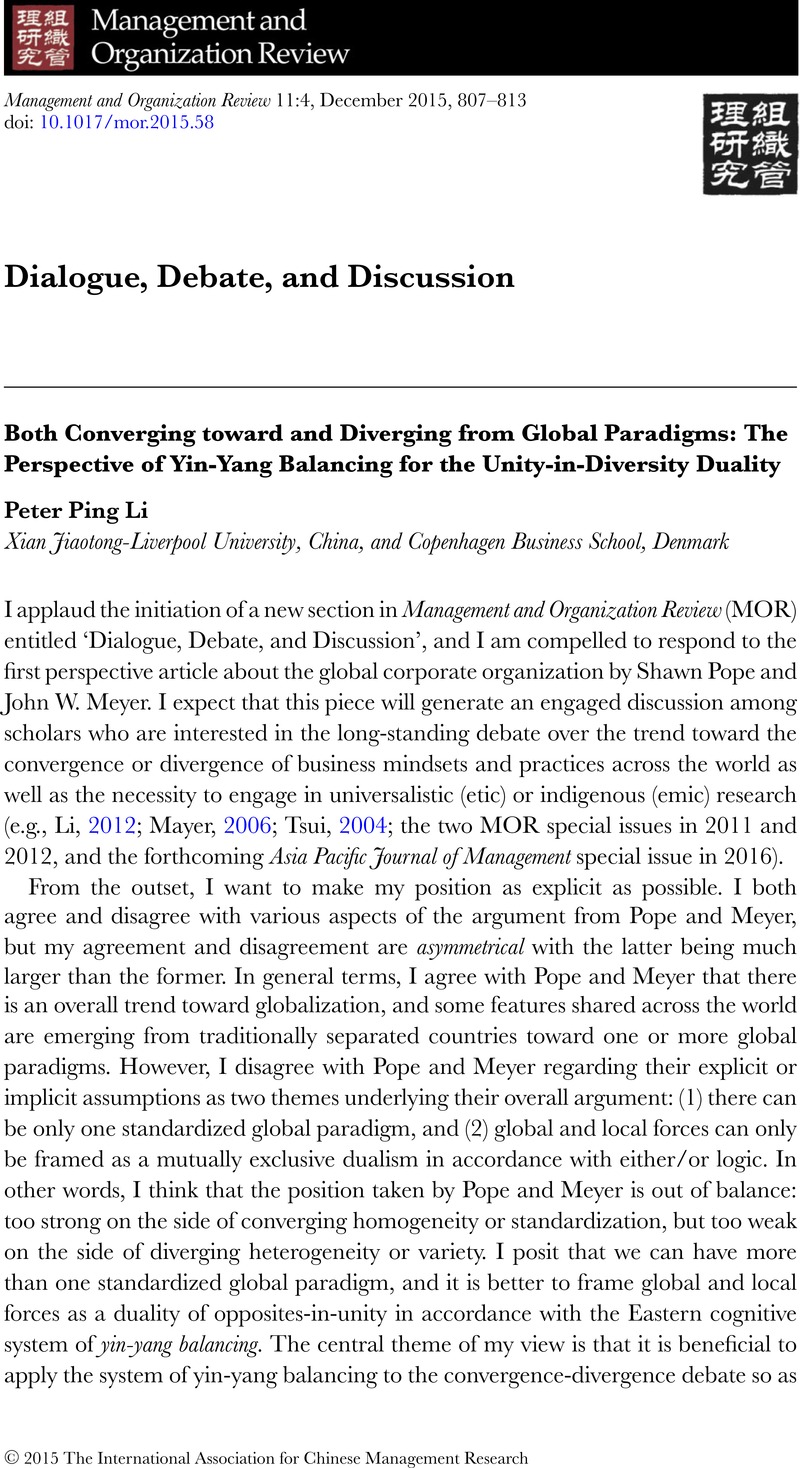Crossref Citations
This article has been cited by the following publications. This list is generated based on data provided by Crossref.
Horak, Sven
2018.
From Cross-Cultural Economic Experiments to Experimental Indigenous Management Research – A Suggestion.
Management and Organization Review,
Vol. 14,
Issue. 4,
p.
651.
Li, Xin
Worm, Verner
and
Xie, Peihong
2018.
Is Yin-Yang superior for paradox research?.
Cross Cultural & Strategic Management,
Vol. 25,
Issue. 3,
p.
501.
Fan, Zheng
Tong, Xiner
Fan, Peihua
and
Fan, Qingli
2019.
A glacier model of Chinese management: perspectives from new institutionalism.
Chinese Management Studies,
Vol. 13,
Issue. 4,
p.
742.
Wang, Liwen
Jin, Jason Lu
and
Zhou, Kevin Zheng
2019.
Institutional forces and customer participation in new product development: A Yin-Yang perspective.
Industrial Marketing Management,
Vol. 82,
Issue. ,
p.
188.
Murmann, Johann Peter
2020.
The Management Transformation of Huawei.
p.
1.
Lee, Lucy Sojung
and
Zhong, Weiguo
2020.
Opportunism, Identification Asymmetry, and Firm Performance in Chinese Interorganizational Relationships.
Management and Organization Review,
Vol. 16,
Issue. 4,
p.
825.
Li, Peter Ping
2021.
Globalization, Political Economy, Business and Society in Pandemic Times.
p.
221.
An, Ran
Zhu, Jiajia
Li, Yuran
and
Zhu, Hui
2022.
Acculturation in a multicultural classroom: perspectives within the yin-yang metaphor framework.
Language and Intercultural Communication,
Vol. 22,
Issue. 5,
p.
534.
Zhu, Zhenduo
and
Kang, Yuanfei
2022.
A Far-Reaching Parental Love? Co-Governance of Intergenerational Succession and Innovation Activities in Chinese Family Firms.
Management and Organization Review,
Vol. 18,
Issue. 2,
p.
358.





